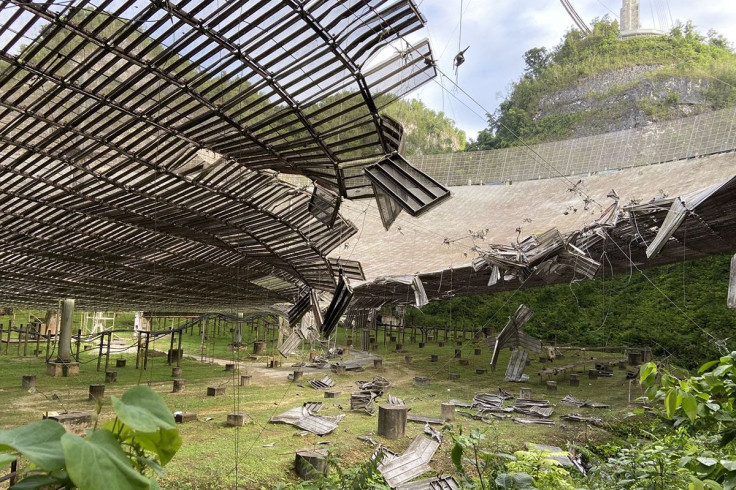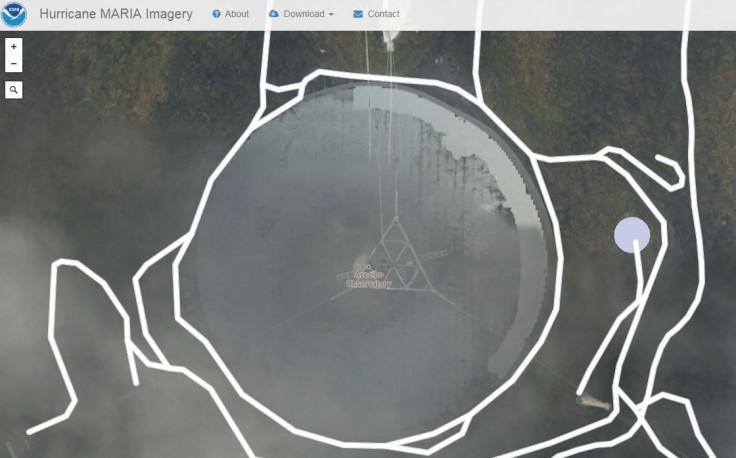Broken Cable Inflicts 100-Foot Damage On Puerto Rico's Arecibo Observatory
KEY POINTS
- Snapped cable caused significant damage to the Arecibo Observatory on Monday
- Facility has paused operations to make way for repairs
- What caused the 3-inch cable to break remains unclear
The Arecibo Observatory in Puerto Rico sustained significant damage on Monday. It is not the first time for the massive observatory to suffer damages.
It was early on Monday when one of the 3-inch thick auxiliary cables supporting a metal platform above the Arecibo Observatory broke and caused a 100-foot gash on the telescope's reflector dish as well as damages to up to eight panels in the Gregorian Dome.
Because of the damages, operations at the observatory have been paused until the necessary repairs are made.
"We have a team of experts assessing the situation," observatory director Eng. Francisco Cordova said in the news release from the University of Central Florida (UCF), which operates the observatory. "Our focus is assuring the safety of our staff, protecting the facilities and equipment, and restoring the facility to full operations as soon as possible, so it can continue to assist scientists around the world."

As it happens, the observatory had only reopened after its recent temporary closure when Tropical Storm Isaias passed Puerto Rico on July 30. At the time, there were no reported damages to the telescope or the radar system.
So far, what caused the cable to break remains unclear but, it is not the first time that the Arecibo Observatory sustained damages. In 2017, for instance, Hurricane Maria caused damages to both the main dish as well as to a smaller, 12-meter dish.
"The facility has endured many hurricanes, tropical storms and earthquakes since it was built 50 years ago. Repairs from Hurricane Maria in 2017 are ongoing," the UCF news release reads. "Through it all, the facility has continued to contribute to significant breakthroughs in space research in the area of gravitational waves, asteroid characterization, planetary exploration and more."

For decades, the Arecibo Observatory has been used by scientists from all over the world for research in various areas such as planetary sciences, radio astronomy and atmospheric science.
For instance, the telescope is used to study potentially hazardous asteroids that fly past the Earth as well as to seek for signs of intelligent extraterrestrial life. In fact, in 1974, the Arecibo even sent out the most powerful deliberate signal from Earth into space, with the intention of communicating with alien life.
© Copyright IBTimes 2024. All rights reserved.






















